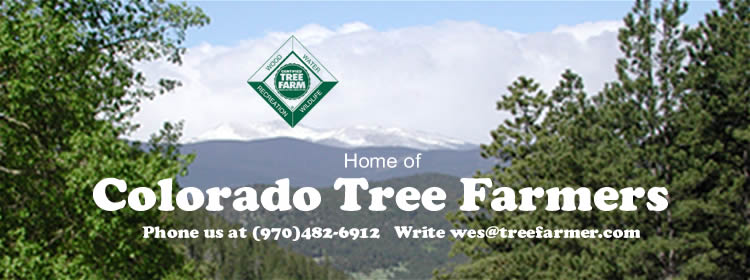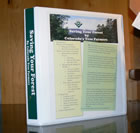The
American Tree Farm System
Standards, Guidelines and Performance Measures for Member Certification
|
Certification in the American Tree Farm System is voluntary. The certification process incorporates established standards and guidelines. All properties certified under the three certification options must conform to the Standards of Sustainability for Forest Certification. This can require substantial time and effort.
However, part of the mission of the Colorado Tree Farmers is to inform the public of the need for active forest management of private forested property and encourage landowners to get started. We therefore encourage ALL owners of forested property and anyone else interested in the health and sustainablitlity of our forests to attend our meetings, tours and other events. We will be happy to share our knowledge with and answer questions from anyone.
If you would like more information, click the "Join Us" link to the right of this article and let's talk.
For more information on the requirements for certification click on the following links:
2010-2015 Standards Guidance document [PDF]
2010-2015 Management Plan Addendum [PDF]
The six things you need to know about the ATFS Standards
- Designed for small woodland owners: These Standards were developed specifically for small woodland owners. The independent panel took care to ensure that the requirements were appropriate for the scale of management practiced on family woodlands across the U.S.
- Management plan: The management plan requirements help streamline the process for Tree Farm owners to participate in USDA conservation incentive programs. The management plan requirements under the 2010-2015 Standards correlate with the US Forest Service guidelines for forest stewardship program forest management plans. Tree Farm management plans will address the following elements as appropriate for the land certified: landowner objectives forest condition and health management activities/ prescriptions tract map soils and water resources wood and fiber production threatened and endangered species, high conservation value forests and other special sites invasive species and integrated pest management
- Special Sites: As the current Standards do, the 2010-2015 Standards require maintenance of special cultural and environmental sites (historical, archaeological, geological, biological and ecological sites). ATFS will be introducing new tools on the Tree Farm website to help landowners research special sites in their state and on their certified Tree Farms.
- Monitoring: Periodic monitoring has been added to the Standards to encourage landowners to monitor their woodlands for changes that could interfere with their management objectives. Things to be on the look out for include pest outbreaks (pine beetle, emerald ash borer, etc), invasive species encroachment (kudzu, Canadian thistle), and indications of trespass. Many landowners are already doing things like walking their boundaries, and inspecting after a thinning or planting for new groups of invasive species.
- Invasive Species: Tree Farmers are encouraged to make practical efforts to prevent, eradicate or otherwise control invasive species using a range of integrated pest management methods. Integrated pest management methods may include pesticides, physical removal methods and preventative methods.
- The new Standards were officially released January 1, 2010, and Tree Farmers had one year to ensure their management plans and management activities meet the Standards. Currently, ATFS Certified Tree Farmer's must follow the 2010-2015 AFF Standard of Sustainability. All volunteer inspectors are trained to the new Standards and are continually working with state programs to provide education to Tree Farmers.
Strengthening the AFF Standards is an important step in gaining and expanding woodland owner’s access to markets through American Tree Farm System certification.
|



